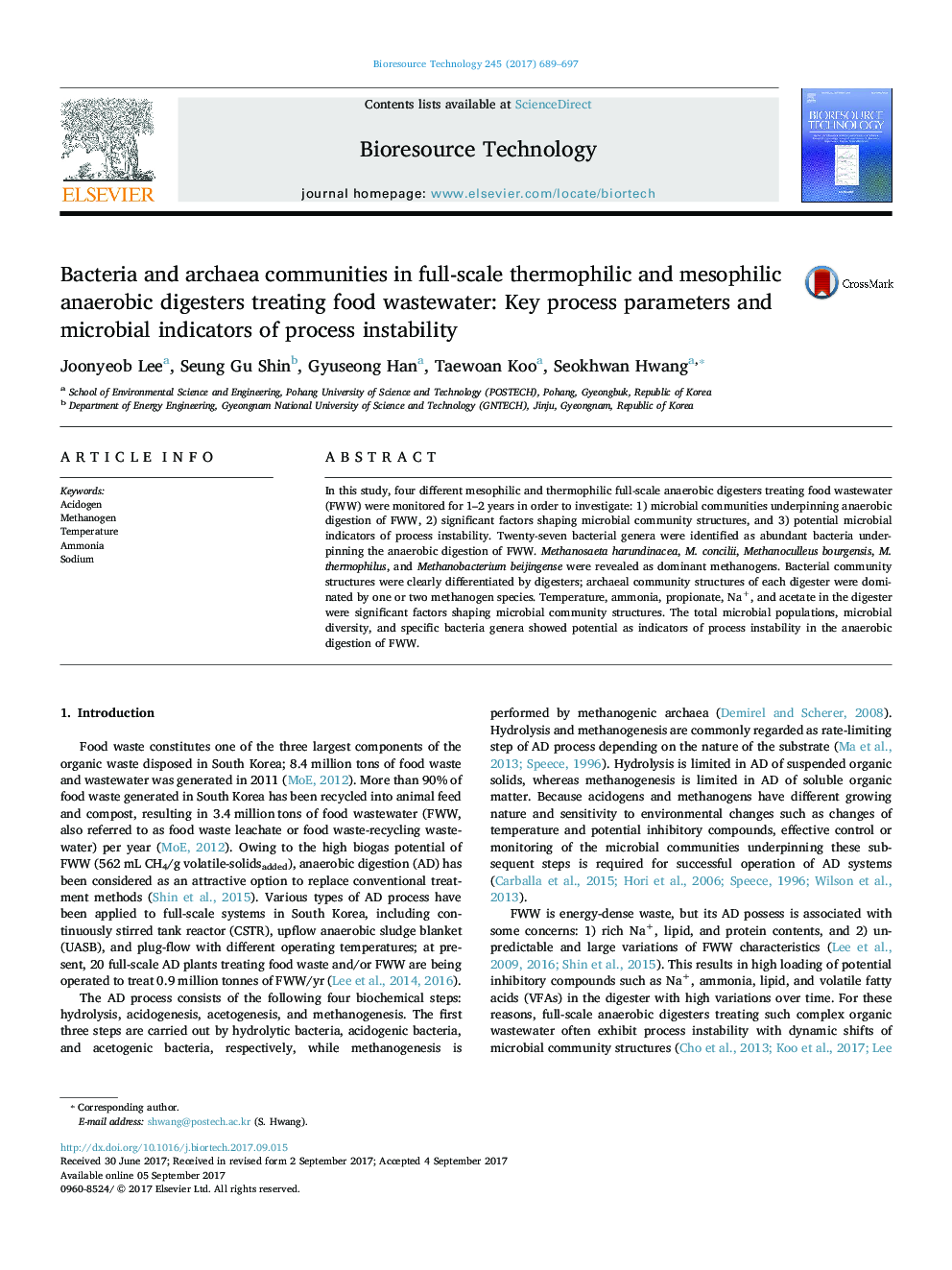| کد مقاله | کد نشریه | سال انتشار | مقاله انگلیسی | نسخه تمام متن |
|---|---|---|---|---|
| 4996789 | 1368274 | 2017 | 9 صفحه PDF | دانلود رایگان |
- Archaea and bacteria in the full-scale AD of FWW were proposed.
- Bacterial community structures were differentiated by digester.
- Temperature, TAN, propionate, Na+ were factors shaping the structures.
- Potential microbial indicators of process instability were suggested.
In this study, four different mesophilic and thermophilic full-scale anaerobic digesters treating food wastewater (FWW) were monitored for 1-2Â years in order to investigate: 1) microbial communities underpinning anaerobic digestion of FWW, 2) significant factors shaping microbial community structures, and 3) potential microbial indicators of process instability. Twenty-seven bacterial genera were identified as abundant bacteria underpinning the anaerobic digestion of FWW. Methanosaeta harundinacea, M. concilii, Methanoculleus bourgensis, M. thermophilus, and Methanobacterium beijingense were revealed as dominant methanogens. Bacterial community structures were clearly differentiated by digesters; archaeal community structures of each digester were dominated by one or two methanogen species. Temperature, ammonia, propionate, Na+, and acetate in the digester were significant factors shaping microbial community structures. The total microbial populations, microbial diversity, and specific bacteria genera showed potential as indicators of process instability in the anaerobic digestion of FWW.
Journal: Bioresource Technology - Volume 245, Part A, December 2017, Pages 689-697
